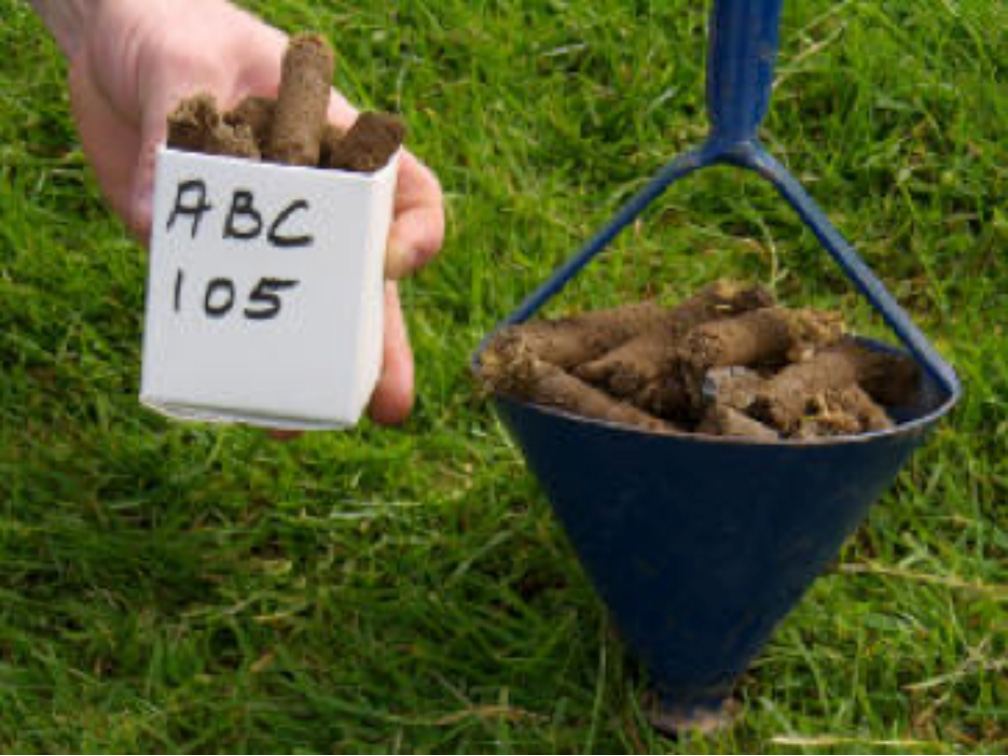 Maximizing grass production is key to farm output in all agri industries be it dairy, beef or sheep. Therefore optimum soil fertility is essential on all grass farms. The first step in maximizing soil fertility is to take soil tests.
Maximizing grass production is key to farm output in all agri industries be it dairy, beef or sheep. Therefore optimum soil fertility is essential on all grass farms. The first step in maximizing soil fertility is to take soil tests.
Well-taken soil samples will provide the basis for tailoring lime, phosphorous (P) and potassium(K) applications to ensure that crops are well established over the winter period.
Aim to:
1.identify fields that require fresh soil samples.
2.Request soil analysis for both major and minor nutrients.
3.Aim to complete fertiliser records for 2018.
4.Prepare a lime and fertiliser plan for the 2019 cropping season.
Having soil test results in advance of planting crops will allow the opportunity to correct any major nutrient deficiencies, for example, lime. We know from previous soil test results that only 12% of tillage soils have the correct P and K (index 3) levels and soil Ph 6.5 or greater for crop production.
Organic manures are a valuable sort of organic matter and nutrients. Manures such as cattle slurry, farmyard manure (FYM) and mushroom compost are ideal for winter crops, as they contain low levels of nitrogen(N) and good levels of P and K. Manures are ideal for replenishing and building soil P and K levels, plus adding valuable soil organic matter. For example, 1,000 gallons of cattle slurry contains 6 units of N, 5 units of P and 32 units of K.
The soil sample results will provide information on areas of the farm that have low, medium or high fertility. You can then use this information to accurately plan fertilizer and slurry applications. Standard soil testing includes information on soil pH, lime requirement and P & K status. The optimum soil pH for grassland is at or above 6.3 and should ideally be at index 3 for P & K. Soils maintained close to the target pH will have benefits of increased grass yields, more efficient utilization of applied fertilizers and manures, and better persistence of more productive species in the sward such as perennial ryegrass and clover. If the lime advice for grassland exceeds 7.5 t/ha, initially only this amount should be applied, and the remainder applied after two years.
A below optimum pH restricts the availability of primarily P and other nutrients, thus reducing grass production until corrected. Index 1 and 2 soils have low nutrients levels and require additional inputs (slurry and/or farm yard manure) in order to support grass growth and increase the soil fertility to the target index 3.
|
Soil Index |
Description (Fertility Status) |
Response to Fertilizer |
|
1 |
Very Low |
Definite |
|
2 |
Low |
Likely |
|
3 |
Medium |
Unlikely |
|
4 |
High |
None |
Lime Has the Ability to:
- Raise soil pH
- Improve availability of essential nutrients (N,P & K)
- Increase the effectiveness of applied N,P,K
- Increase microorganism activity in the soil
- Improve plant growth and grass yield.
Drummond’s technical sales staff are on hand to process your soil samples, interpret the results and advise you on the best approach on maximizing your farm output throughout the year. Contact Clonee Tel: 01 8255011 or your local Drummonds branch.


